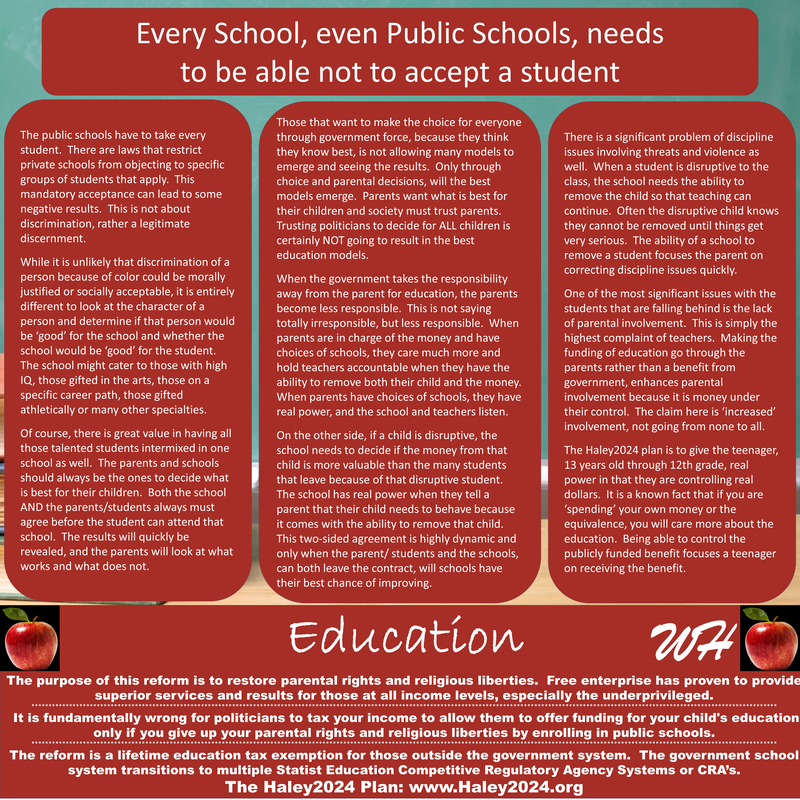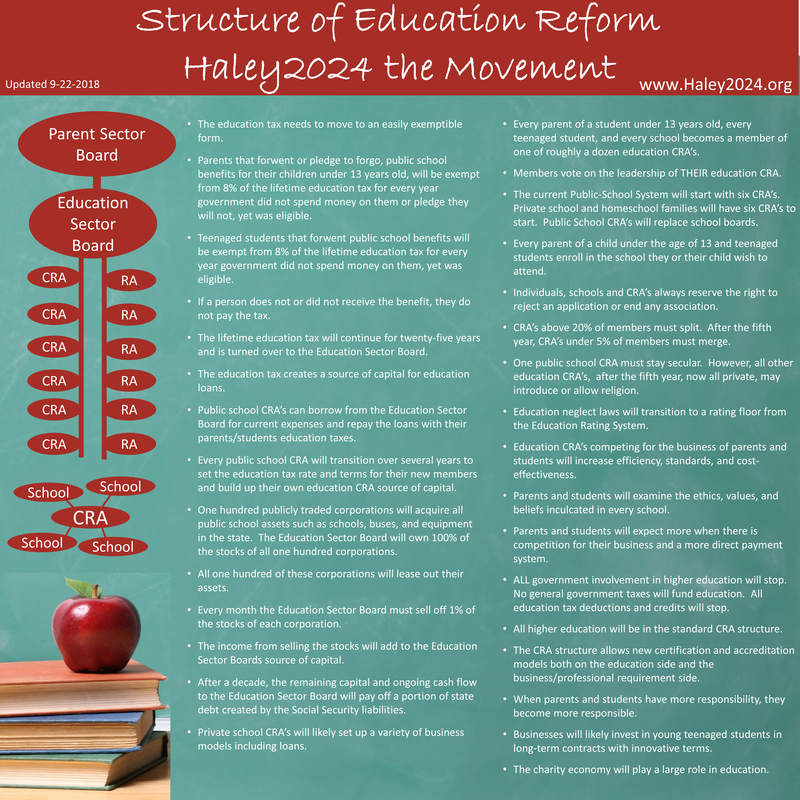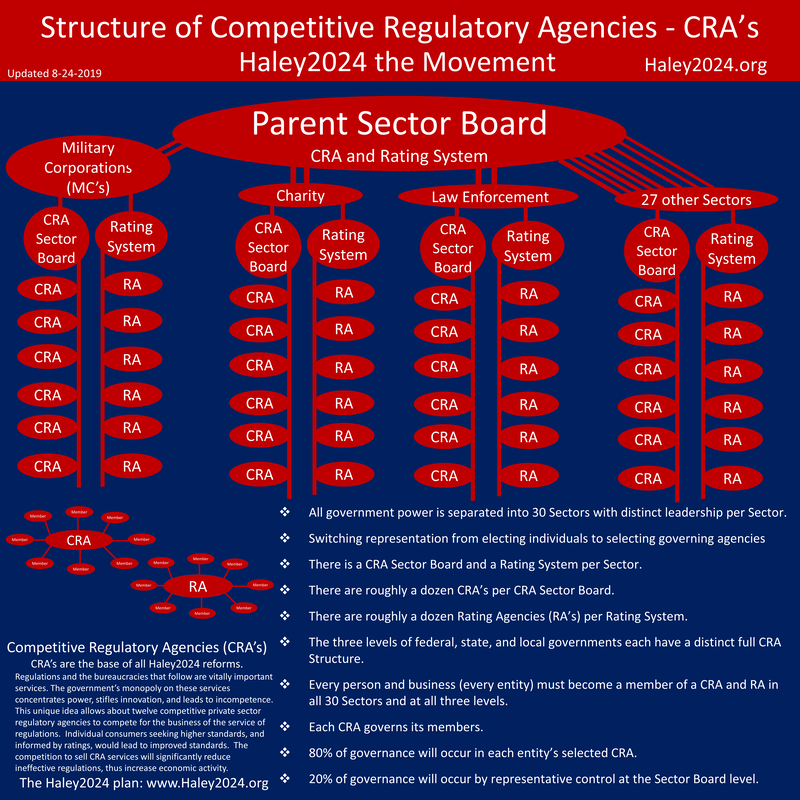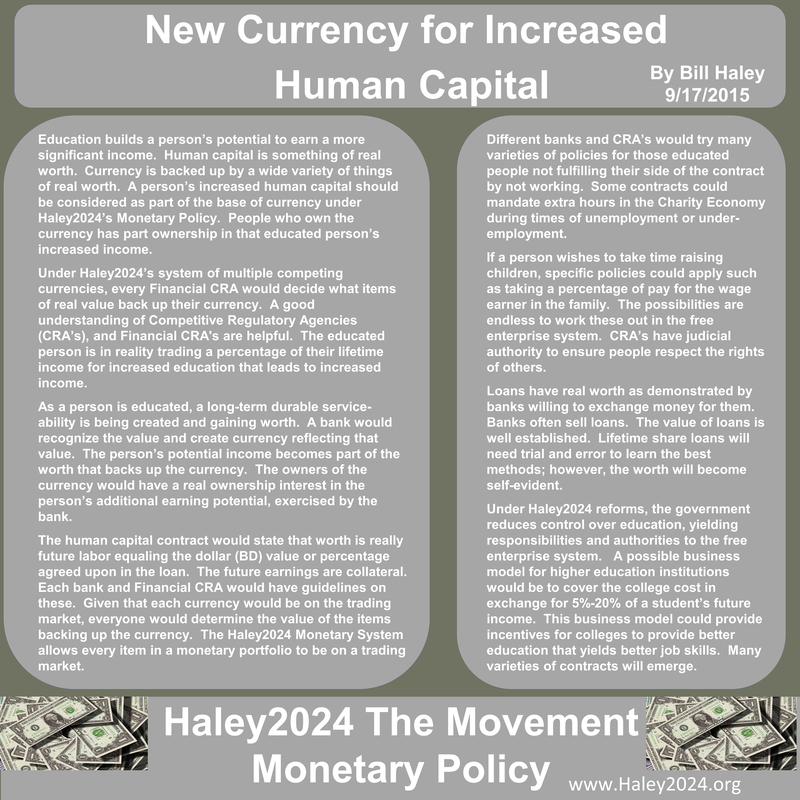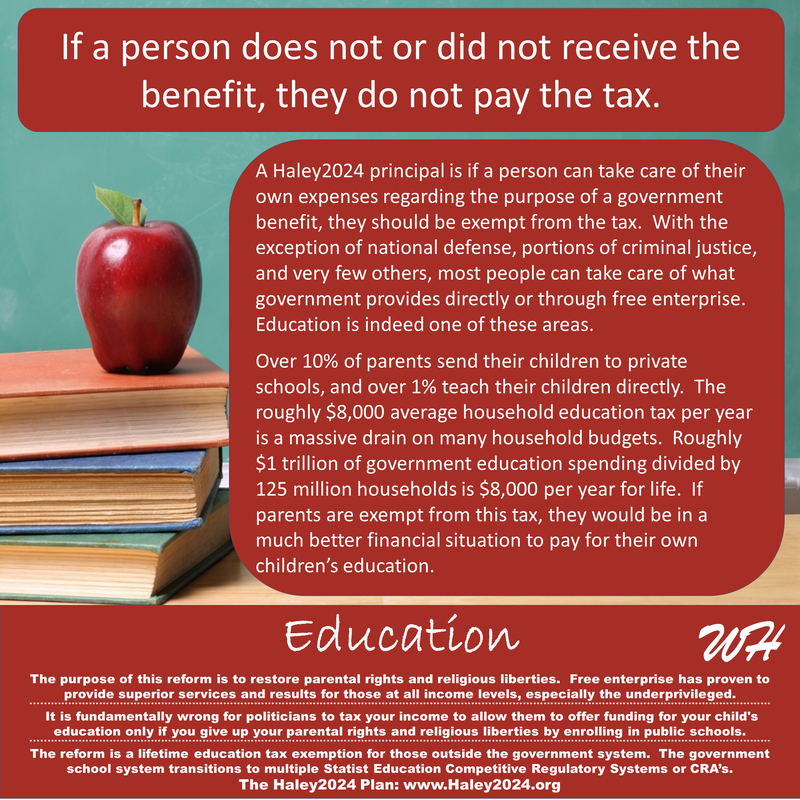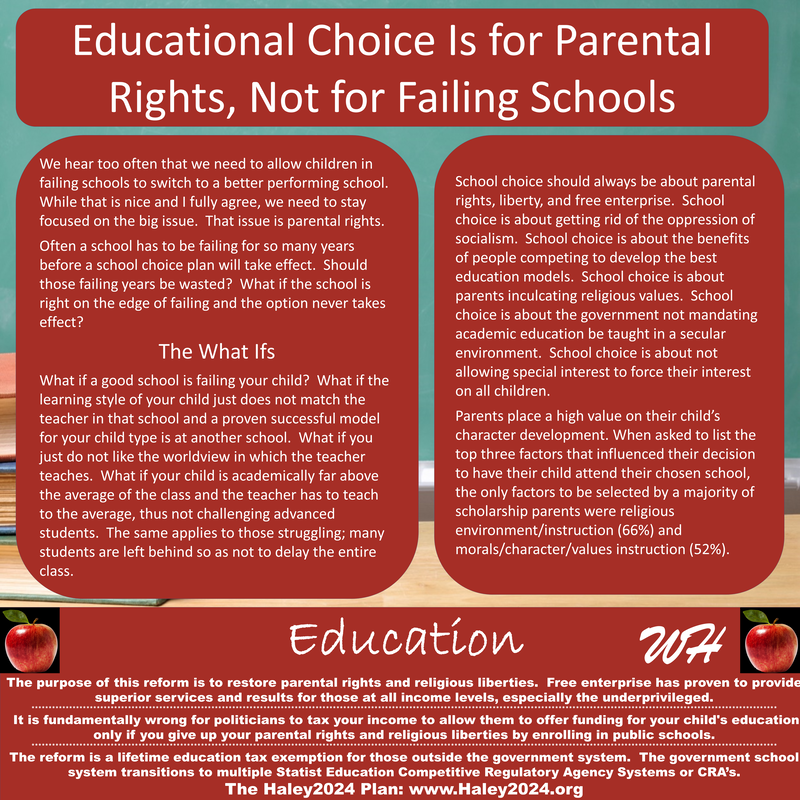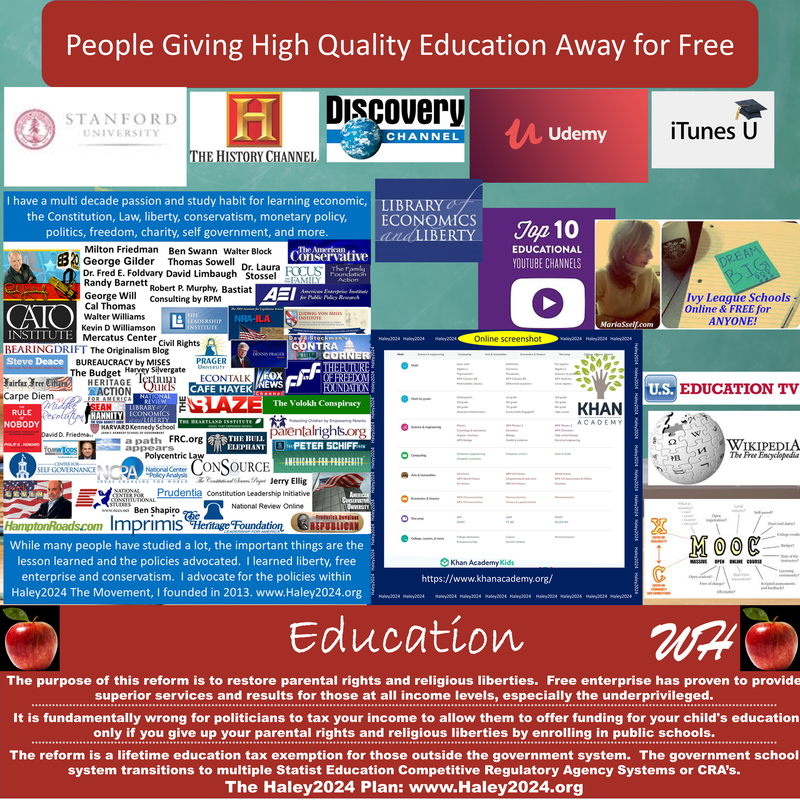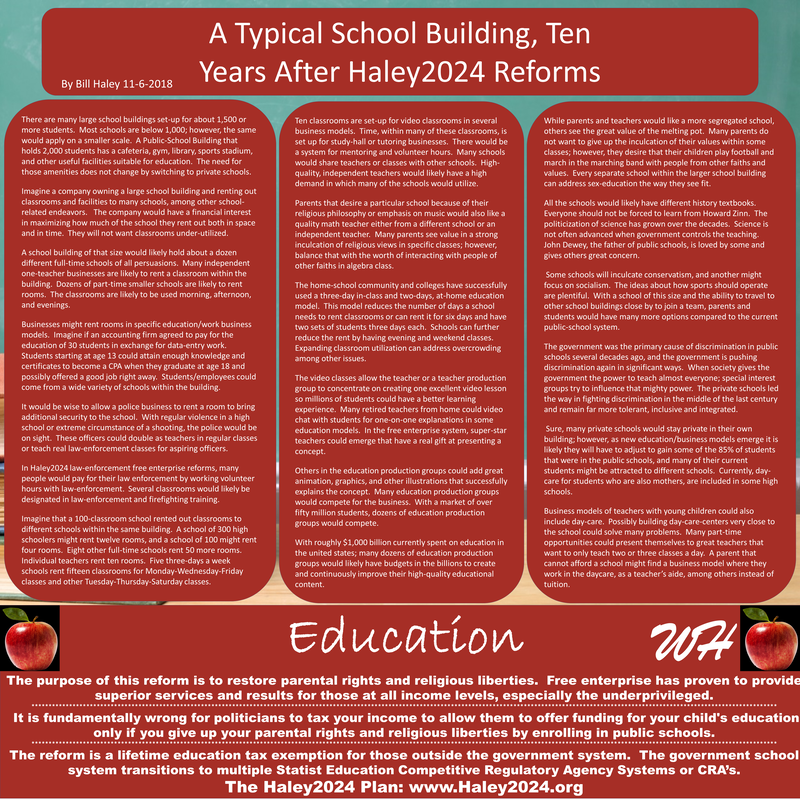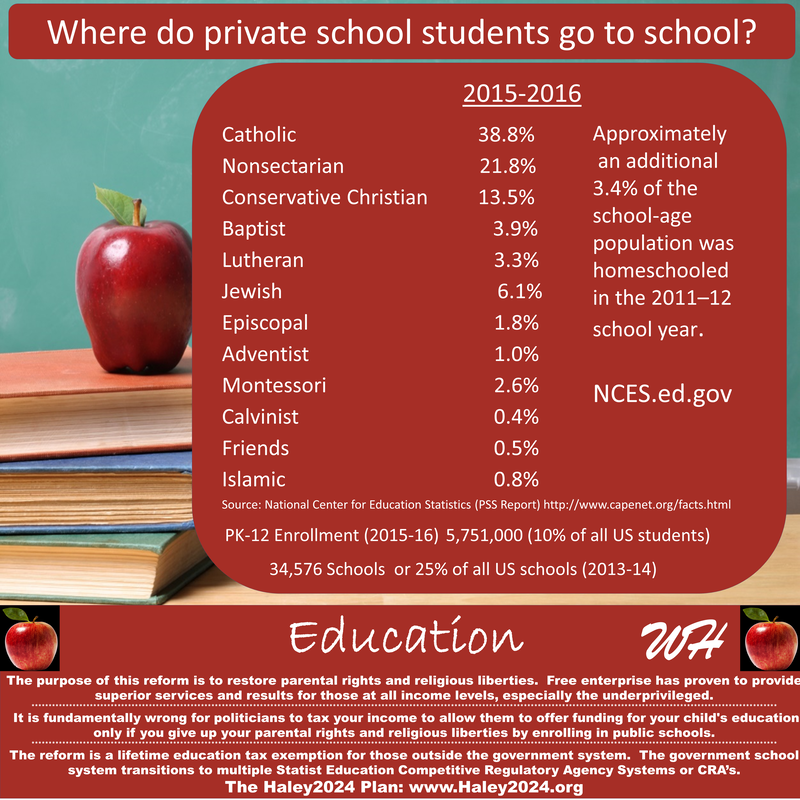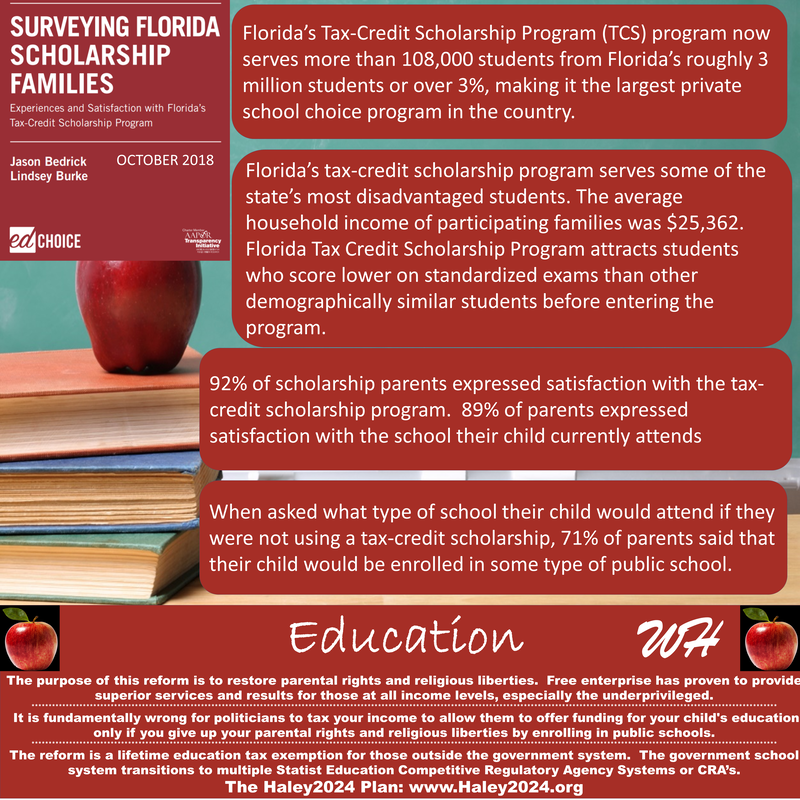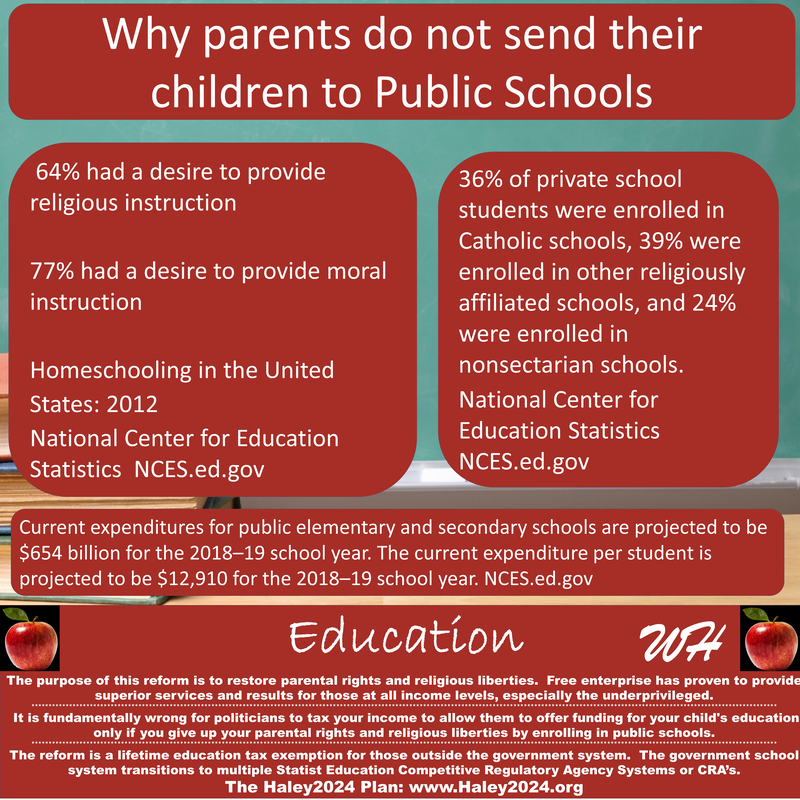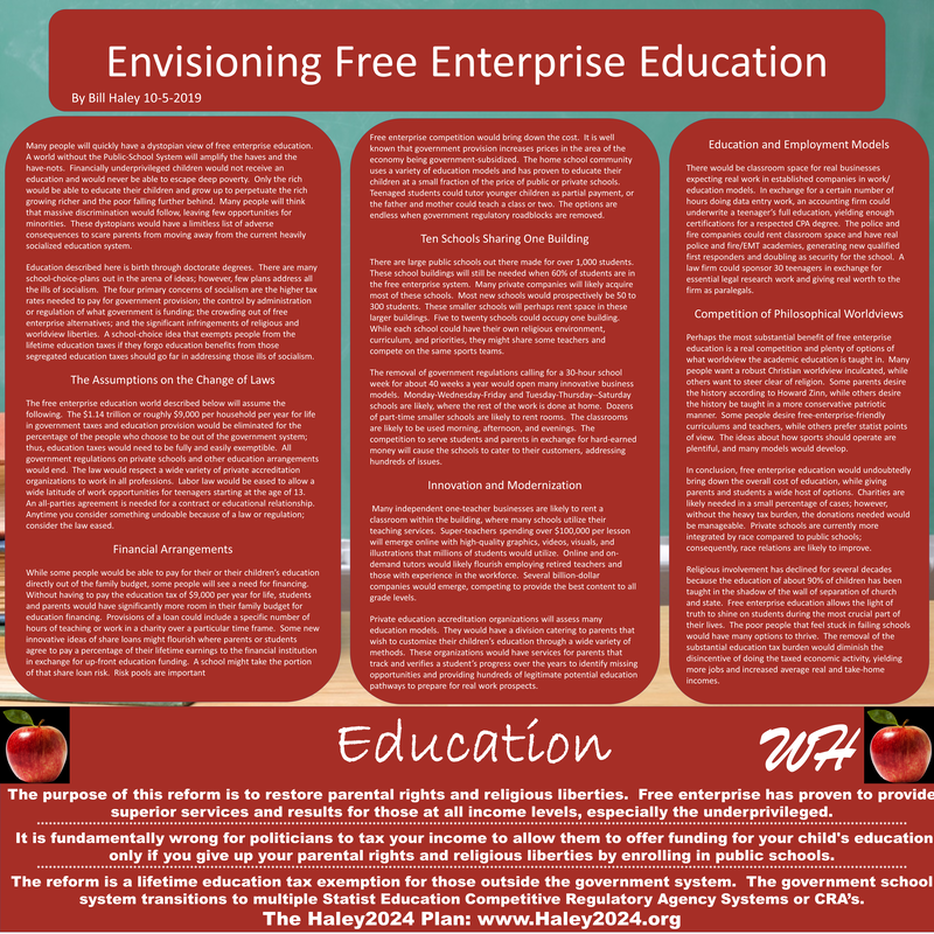| By Bill Haley Many people will quickly have a dystopian view of free enterprise education. A world without the Public-School System will amplify the haves and the have-nots. Financially underprivileged children would not receive an education and would never be able to escape deep poverty. Only the rich would be able to educate their children and grow up to perpetuate the rich growing richer and the poor falling further behind. Many people will think that massive discrimination would follow, leaving few opportunities for minorities. These dystopians would have a limitless list of adverse consequences to scare parents from moving away from the current heavily socialized education system. |
| Education described here is birth through doctorate degrees. There are many school-choice-plans out in the arena of ideas; however, few plans address all the ills of socialism. The four primary concerns of socialism are the higher tax rates needed to pay for government provision; the control by administration or regulation of what government is funding; the crowding out of free enterprise alternatives; and the significant infringements of religious and worldview liberties. A school-choice idea that exempts people from the lifetime education taxes if they forgo education benefits from those segregated education taxes should go far in addressing those ills of socialism. |
The Assumptions on the Change of Laws The free enterprise education world described below will assume the following. The $1.14 trillion or roughly $9,000 per household per year for life in government taxes and education provision would be eliminated for the percentage of the people who choose to be out of the government system; thus, education taxes would need to be fully and easily exemptible. All government regulations on private schools and other education arrangements would end. The law would respect a wide variety of private accreditation organizations to work in all professions. Labor law would be eased to allow a wide latitude of work opportunities for teenagers starting at the age of 13. An all-parties agreement is needed for a contract or educational relationship. Anytime you consider something undoable because of a law or regulation; consider the law eased. |
Financial Arrangements While some people would be able to pay for their or their children’s education directly out of the family budget, some people will see a need for financing. Without having to pay the education tax of $9,000 per year for life, students and parents would have significantly more room in their family budget for education financing. Provisions of a loan could include a specific number of hours of teaching or work in a charity over a particular time frame. Some new innovative ideas of share loans might flourish where parents or students agree to pay a percentage of their lifetime earnings to the financial institution in exchange for up-front education funding. A school might take the portion of that share loan risk. Risk pools are important |
| Free enterprise competition would bring down the cost. It is well known that government provision increases prices in the area of the economy being government-subsidized. The home school community uses a variety of education models and has proven to educate their children at a small fraction of the price of public or private schools. Teenaged students could tutor younger children as partial payment, or the father and mother could teach a class or two. The options are endless when government regulatory roadblocks are removed. |
Ten Schools Sharing One Building There are large public schools out there made for over 1,000 students. These school buildings will still be needed when 60% of students are in the free enterprise system. Many private companies will likely acquire most of these schools. Most new schools would prospectively be 50 to 300 students. These smaller schools will perhaps rent space in these larger buildings. Five to twenty schools could occupy one building. While each school could have their own religious environment, curriculum, and priorities, they might share some teachers and compete on the same sports teams. |
| The removal of government regulations calling for a 30-hour school week for about 40 weeks a year would open many innovative business models. Monday-Wednesday-Friday and Tuesday-Thursday--Saturday schools are likely, where the rest of the work is done at home. Dozens of part-time smaller schools are likely to rent rooms. The classrooms are likely to be used morning, afternoon, and evenings. The competition to serve students and parents in exchange for hard-earned money will cause the schools to cater to their customers, addressing hundreds of issues. |
Innovation and Modernization Many independent one-teacher businesses are likely to rent a classroom within the building, where many schools utilize their teaching services. Super-teachers spending over $100,000 per lesson will emerge online with high-quality graphics, videos, visuals, and illustrations that millions of students would utilize. Online and on-demand tutors would likely flourish employing retired teachers and those with experience in the workforce. Several billion-dollar companies would emerge, competing to provide the best content to all grade levels. |
| Private education accreditation organizations will assess many education models. They would have a division catering to parents that wish to customize their children’s education through a wide variety of methods. These organizations would have services for parents that track and verifies a student’s progress over the years to identify missing opportunities and providing hundreds of legitimate potential education pathways to prepare for real work prospects. |
Education and Employment Models There would be classroom space for real businesses expecting real work in established companies in work/ education models. In exchange for a certain number of hours doing data entry work, an accounting firm could underwrite a teenager’s full education, yielding enough certifications for a respected CPA degree. The police and fire companies could rent classroom space and have real police and fire/EMT academies, generating new qualified first responders and doubling as security for the school. A law firm could sponsor 30 teenagers in exchange for essential legal research work and giving real worth to the firm as paralegals. |
Competition of Philosophical Worldviews Perhaps the most substantial benefit of free enterprise education is a real competition and plenty of options of what worldview the academic education is taught in. Many people want a robust Christian worldview inculcated, while others want to steer clear of religion. Some parents desire the history according to Howard Zinn, while others desire the history be taught in a more conservative patriotic manner. Some people desire free-enterprise-friendly curriculums and teachers, while others prefer statist points of view. The ideas about how sports should operate are plentiful, and many models would develop. |
| In conclusion, free enterprise education would undoubtedly bring down the overall cost of education, while giving parents and students a wide host of options. Charities are likely needed in a small percentage of cases; however, without the heavy tax burden, the donations needed would be manageable. Private schools are currently more integrated by race compared to public schools; consequently, race relations are likely to improve. |
| Religious involvement has declined for several decades because the education of about 90% of children has been taught in the shadow of the wall of separation of church and state. Free enterprise education allows the light of truth to shine on students during the most crucial part of their lives. The poor people that feel stuck in failing schools would have many options to thrive. The removal of the substantial education tax burden would diminish the disincentive of doing the taxed economic activity, yielding more jobs and increased average real and take-home incomes. |
